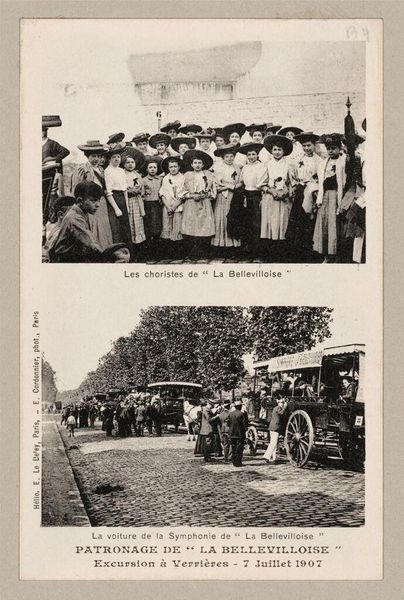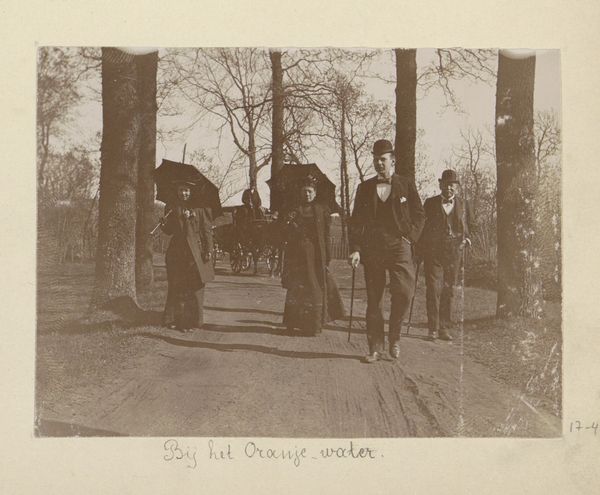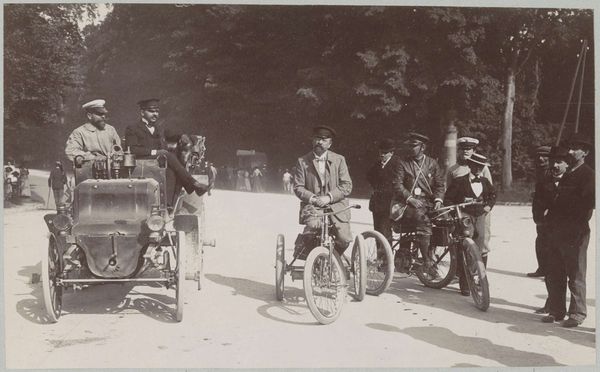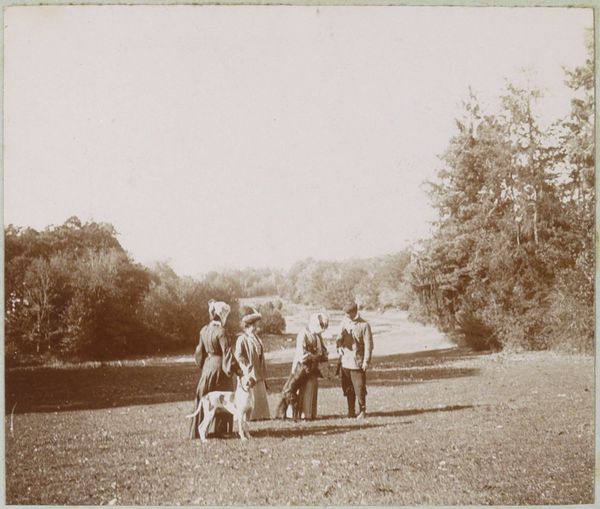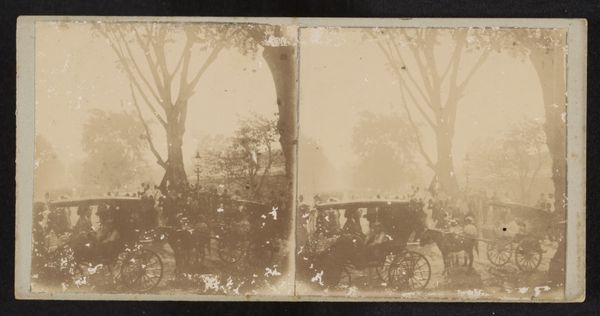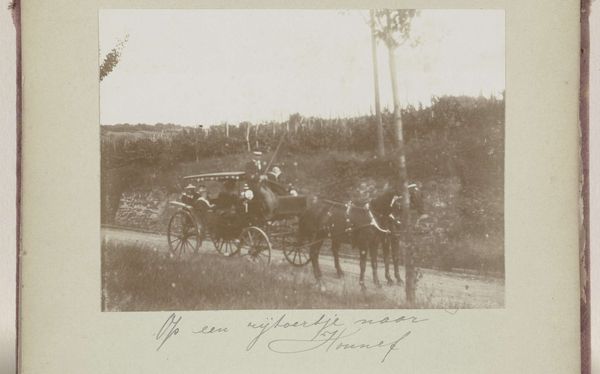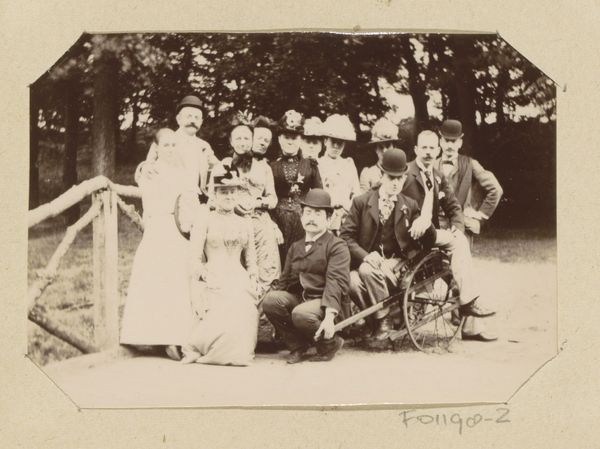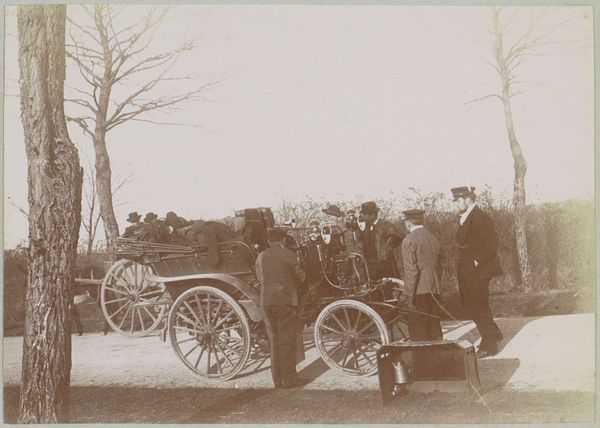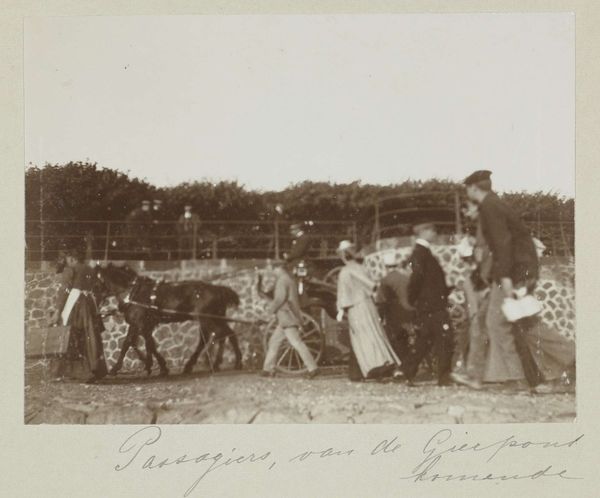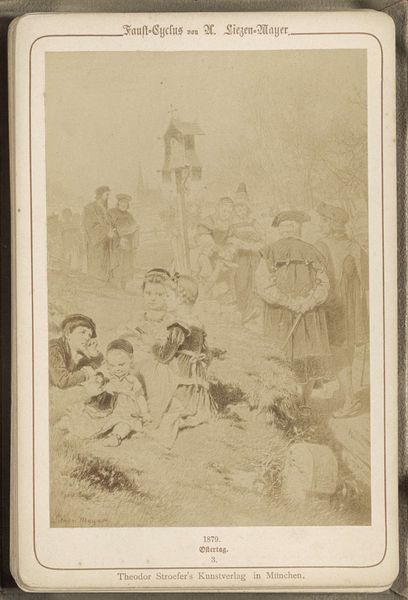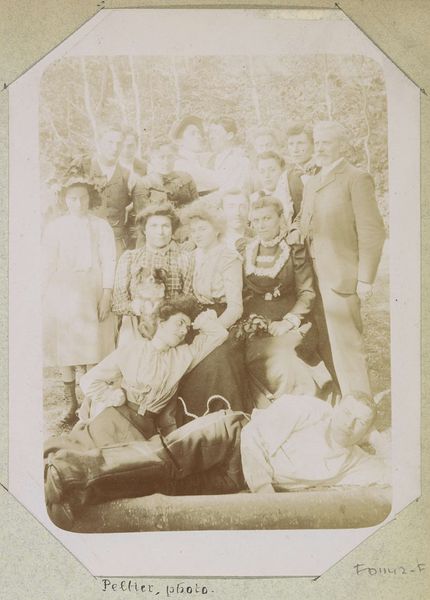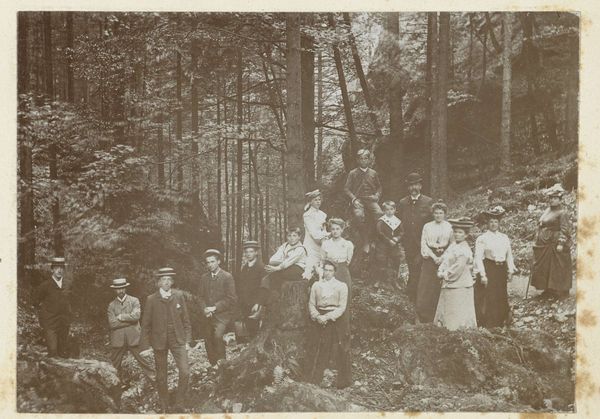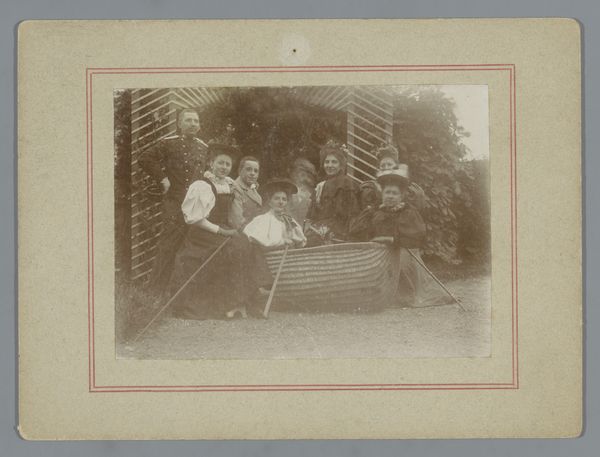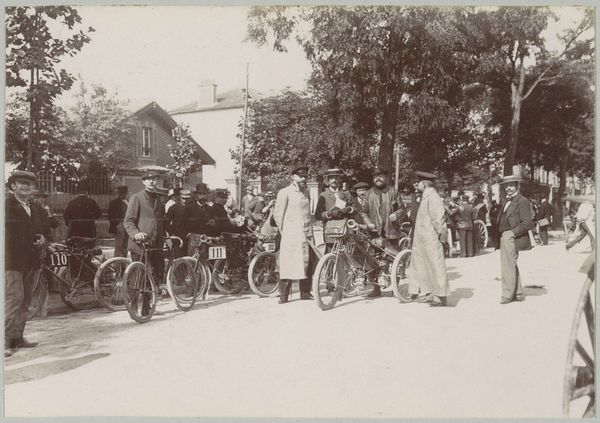
photography, gelatin-silver-print
#
portrait
#
lake
#
landscape
#
photography
#
group-portraits
#
gelatin-silver-print
#
men
#
sketchbook drawing
#
genre-painting
Dimensions: Image: 11.8 × 14.3 cm (4 5/8 × 5 5/8 in.) (a) Image: 7.3 × 9.3 cm (2 7/8 × 3 11/16 in.) (b)
Copyright: Public Domain
Curator: I'm struck by the way the light catches the donkey’s harness in "The Donkey Party; The Upper Lake" by James Knight, dating back to the mid-1850s. It’s a gelatin silver print currently residing at the Metropolitan Museum of Art. What's your initial take on it? Editor: It evokes a sense of quiet Victorian gentility. The donkey, cart, the stillness of the lake... It’s all rather dreamlike, wouldn’t you agree? What symbolic roles do the figures’ placements and gestures hold for you? Curator: The arrangement feels almost performative. Consider the labor involved – the physical act of arranging the donkey, the cart, and the people – juxtaposed with the "Upper Lake" image. Was this some specific event the photograph sought to replicate, or a completely artificial fabrication for purely representational purposes? Editor: Absolutely. The grouping presents the viewer with archetypes, almost. The sober man in a top hat could represent responsibility, those dark garbed woman nearby may stand for something far less explicit: mystery. They form something akin to an allegorical tableau. Curator: Fascinating to see you immediately zeroing on allegorical notions in the work. I find the photographic processes themselves to be loaded, since the image quality achieved is dependent on factors like the weather that simply couldn't be fully controlled in the 1850's. The material challenges photographers had to overcome! Editor: That's certainly a powerful idea – these photographs weren't designed to look so dark or heavily-toned, as in today's age. The photographs reflect the technology of the time and the expectations it established about realism, influencing future viewers to read photographic cues. In some ways, that helps contribute to their ongoing myth-making quality today. Curator: Precisely! Examining those material and economic production pressures of the work really unlock further interpretations about Knight's intention behind them. Editor: For me, it highlights how we, through interpreting the symbolism of each scene, build layers of meaning across eras, while it all stands on a foundation that begins with, for you, the artist’s labour. Fascinating to hear both perspectives. Curator: Agreed! The visual weight of it all truly makes it thought-provoking, when taken in concert.
Comments
No comments
Be the first to comment and join the conversation on the ultimate creative platform.
